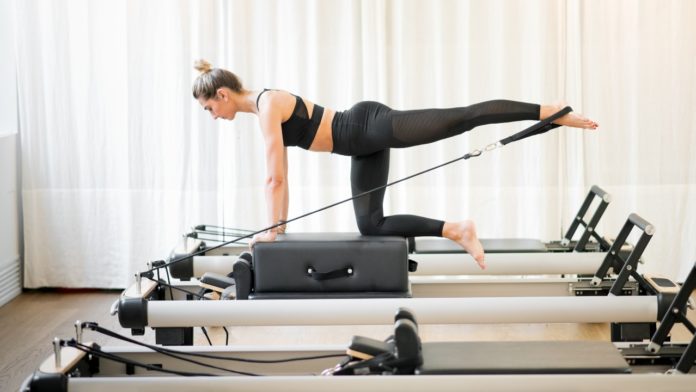Pilates has become a household brand, thanks to celebrity endorsements for its long, lean, and sculpted appearance. It’s about a lot more than oversimplified marketing that promotes a “long and lean” body, and it’s about a lot more than the assumption that it’s only for women. Pilates is appropriate for people of all genders, ages, races, sizes, abilities, and fitness levels. Over 600 exercises and variants make up the Pilates repertoire, which includes mat and specialist equipment workouts.
Whether you live a sedentary lifestyle, are a weekend warrior, are pregnant, are undergoing rehab, have anxiety, or are a professional athlete, there’s something for you. Pilates has been found in studies to improve one’s quality of life by reducing sadness and pain, particularly back pain. It’s a popular cross-training exercise that doctors advocate for overall health, injury prevention, and therapeutic purposes.
Pilates aligns and supports your complete body’s overall structure and joints. When done correctly and with appropriate technique, what looks to be simple may be deceptively tough and highly effective. Pilates is a low-impact workout that improves strength by balancing muscles and fine-tuning neuromuscular rhythms.
The best strength you can get from Pilates is nonrigid strength, which combines strength with mobility and suppleness. It allows you to move and breathe more freely and powerfully throughout your day, with less pain.
BENEFITS OF PILATES
- 1. It strengthens the core.
Pilates is well-known for emphasizing the core, which is the center of the body and the source of all movement. The core is made up of all of the muscles that surround the trunk and support and stabilize the body when they are strong and flexible. Pilates strengthens and functions the core. Core strength is an important factor in reducing back and hip pain, as well as pelvic floor dysfunction. It is also the source of explosive movement, earning it the nickname “the powerhouse.”
- 2. It helps to enhance posture.
Your parents were correct when they encouraged you to sit up straight and stop slouching. The difference between sitting or standing tall with ease and having weak, unbalanced muscles, headaches, shoulder or back pain is improved posture. Pilates focuses on the alignment of the entire body, optimal joint range of motion, and a balance of all opposing muscles. It improves posture by bringing attention to your alignment and strengthening postural muscles that have been neglected.
3. It helps to relieve back discomfort.
Pilates focuses on contracting and releasing the deeper abdominal muscles and the pelvic floor, which is a true measure of strength. These muscles act as a brace, lifting and supporting the organs while also protecting and stabilising the spine.
4. It helps to avoid injuries.
Pilates works to bring the body’s muscles into equilibrium, ensuring that they are neither loose nor rigid. Muscles that are either too loose and weak or too stiff and inflexible might put the body at risk of injury.
Pilates emphasises the development of dynamic strength, which means you’ll be able to better support and stabilise your joints while moving. Pilates has been shown to be an excellent approach for lowering injury risk in sports in studies.
5. It eases menstruation discomfort.
Dysmenorrhea is a condition that causes painful menstrual cycles, and anyone who has had it knows how debilitating it can be. Pilates has been shown in studies to help with menstruation pain relief.
6.It reduces tension.
Pilates’ internal attention and use of breath can down-regulate the nervous system, building on the advantage of body awareness. As a result, you’ll be able to get out of fight-or-flight mode, drop cortisol, and reduce stress over time.
7. It increases mobility and flexibility.
Smooth transitions between precise and slow, controlled movements keep a Pilates workout flowing. Rather of stretching following a strengthening exercise, most Pilates routines combine the two, resulting in increased strength, flexibility, and mobility.
8. It enhances equilibrium.
Balance is crucial at any age and is required for everyday tasks such as walking or other nonlinear movements in life, such as reaching up and twisting. Pilates improves balance and gait not only through strengthening the core, but also by emphasizing alignment and whole-body movements.
ALHSO READ : HICCUPS AND ITS CAUSES.
